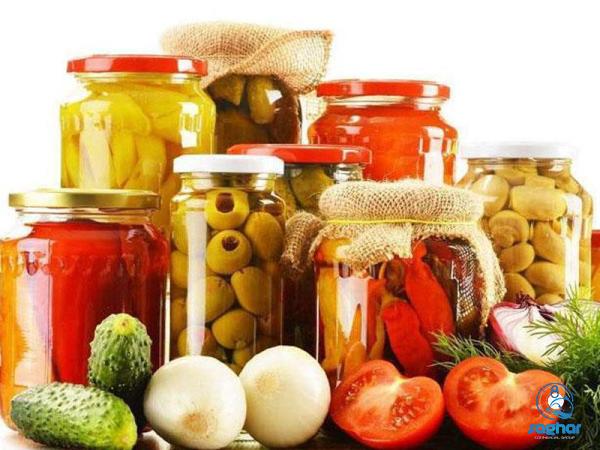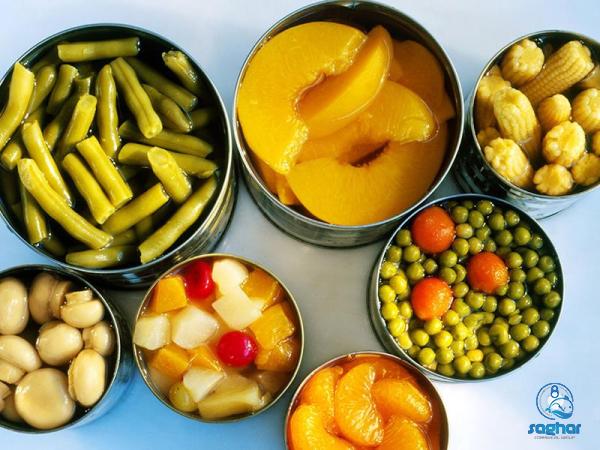An In-depth Look at the Purchase Price of Various Canned Foods: Properties, Advantages, and Disadvantages Introduction: Canned foods have been a staple in many households for decades, providing convenience and longevity to consumers. One of the key factors that influence our decision to purchase canned goods is the price. In this article, we will delve into the purchase price of various canned foods, exploring their properties, advantages, and disadvantages. By understanding the nuances of pricing, consumers can make informed decisions while considering their budget and nutritional needs. Properties of Canned Foods: 1. Long Shelf Life: One of the primary characteristics of canned foods is their extended shelf life. The preservation process involves sealing the food in an airtight container, preventing the growth of bacteria and other microorganisms that cause spoilage. This property allows canned foods to remain edible for months and even years, reducing food wastage. 2. Nutritional Value: Canned foods are usually processed shortly after harvesting, ensuring that their nutritional content is retained. This factor is particularly relevant for fruits and vegetables, as the preservation process locks in vitamins and minerals. Moreover, canned foods are often consumed when fresh produce is not readily available or affordable, making them a reliable source of nutrients year-round.

Canned foods
 Advantages of Purchasing Canned Foods: 1. Cost-Effective: Canned foods are generally more affordable compared to fresh alternatives, especially when considering off-season or rare produce. The production process, which involves bulk purchasing and streamlined operations, allows manufacturers to offer competitive prices to consumers. This affordability can be particularly beneficial for families on a tight budget or individuals looking for cost-effective meal options. 2. Convenient and Time-Saving: Canned foods offer unparalleled convenience, as they are pre-cooked and require minimal preparation. The time saved from cleaning, peeling, and chopping fresh ingredients can be significant. This convenience factor makes canned foods an ideal choice for individuals with busy lifestyles or those lacking culinary skills. 3. Availability and Accessibility: Canned foods are widely available in supermarkets, grocery stores, and even online platforms, ensuring easy access for consumers regardless of their location. This availability is especially crucial for people living in remote areas with limited access to fresh produce. Canned foods can be a reliable source of essential nutrients and sustenance in such situations.
Advantages of Purchasing Canned Foods: 1. Cost-Effective: Canned foods are generally more affordable compared to fresh alternatives, especially when considering off-season or rare produce. The production process, which involves bulk purchasing and streamlined operations, allows manufacturers to offer competitive prices to consumers. This affordability can be particularly beneficial for families on a tight budget or individuals looking for cost-effective meal options. 2. Convenient and Time-Saving: Canned foods offer unparalleled convenience, as they are pre-cooked and require minimal preparation. The time saved from cleaning, peeling, and chopping fresh ingredients can be significant. This convenience factor makes canned foods an ideal choice for individuals with busy lifestyles or those lacking culinary skills. 3. Availability and Accessibility: Canned foods are widely available in supermarkets, grocery stores, and even online platforms, ensuring easy access for consumers regardless of their location. This availability is especially crucial for people living in remote areas with limited access to fresh produce. Canned foods can be a reliable source of essential nutrients and sustenance in such situations.
Specifications of canned food
 Disadvantages of Purchasing Canned Foods: 1. Nutrient Loss: While canned foods do retain a significant portion of their nutritional value, certain vitamins, such as vitamin C and thiamine, can degrade during the preservation process. Additionally, the high heat used in the canning process can potentially reduce the content of heat-sensitive nutrients and enzymes. However, it is worth noting that the amount of nutrient loss varies depending on the type of food and the specific canning process employed. 2. Sodium and Preservatives: Canned foods often contain added sodium and preservatives to enhance flavor, extend shelf life, and prevent spoilage. While these additives may not pose significant health risks for individuals with a balanced diet, excessive sodium consumption can be problematic, particularly for those with dietary restrictions or pre-existing conditions such as high blood pressure. Consequently, individuals should pay attention to the sodium content and select low-sodium options when available. 3. Environmental Impact: The production and disposal of canned food packaging have an environmental impact. The manufacturing process involves the use of energy and resources, contributing to carbon emissions and waste. Additionally, improper disposal or lack of recycling can exacerbate this impact. Consumers concerned about sustainability should consider purchasing canned foods in recyclable packaging or exploring alternative options such as frozen or fresh produce.
Disadvantages of Purchasing Canned Foods: 1. Nutrient Loss: While canned foods do retain a significant portion of their nutritional value, certain vitamins, such as vitamin C and thiamine, can degrade during the preservation process. Additionally, the high heat used in the canning process can potentially reduce the content of heat-sensitive nutrients and enzymes. However, it is worth noting that the amount of nutrient loss varies depending on the type of food and the specific canning process employed. 2. Sodium and Preservatives: Canned foods often contain added sodium and preservatives to enhance flavor, extend shelf life, and prevent spoilage. While these additives may not pose significant health risks for individuals with a balanced diet, excessive sodium consumption can be problematic, particularly for those with dietary restrictions or pre-existing conditions such as high blood pressure. Consequently, individuals should pay attention to the sodium content and select low-sodium options when available. 3. Environmental Impact: The production and disposal of canned food packaging have an environmental impact. The manufacturing process involves the use of energy and resources, contributing to carbon emissions and waste. Additionally, improper disposal or lack of recycling can exacerbate this impact. Consumers concerned about sustainability should consider purchasing canned foods in recyclable packaging or exploring alternative options such as frozen or fresh produce.
buy canned food
 Conclusion: The purchase price of canned foods is affected by various factors, including the type of food, brand, and quantity. While canned foods offer advantages such as cost-effectiveness, convenience, and accessibility, consumers should be aware of potential disadvantages such as nutrient loss, sodium content, and environmental impact. By striking a balance between budget, nutritional needs, and personal values, individuals can make informed choices that suit their circumstances. It is important to consider the overall dietary composition and incorporate a variety of foods, including fresh alternatives, to maintain a well-rounded and balanced diet.
Conclusion: The purchase price of canned foods is affected by various factors, including the type of food, brand, and quantity. While canned foods offer advantages such as cost-effectiveness, convenience, and accessibility, consumers should be aware of potential disadvantages such as nutrient loss, sodium content, and environmental impact. By striking a balance between budget, nutritional needs, and personal values, individuals can make informed choices that suit their circumstances. It is important to consider the overall dietary composition and incorporate a variety of foods, including fresh alternatives, to maintain a well-rounded and balanced diet.

Your comment submitted.